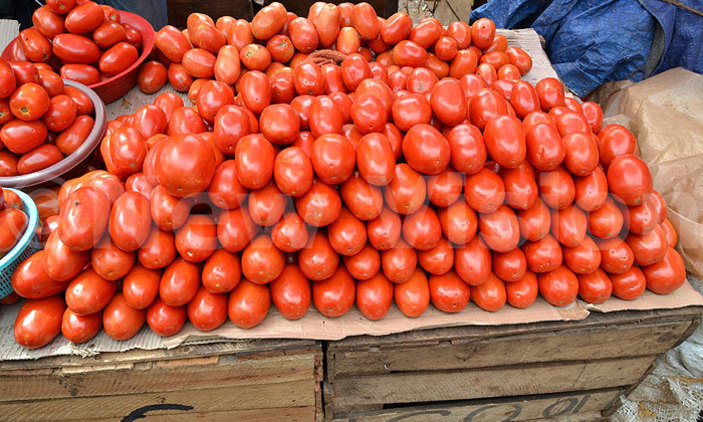One of the biggest factors holding back Kenyan agribusiness is the low uptake of high-yield seeds, developed over decades by research institutes and seed companies.
According to a research by the Kenya Plant Health Inspectorate Service, the informal sector in Kenya accounts for about 60-70 per cent of most seeds planted by farmers across the country. These seeds are usually not certified therefore denying farmers the chance to maximize yields in their farms. The hardest hit areas include western Kenya and the Rift Valley regions, which form a bulk of Kenya’s bread basket.
Related content
How to spot fake seeds in the market
Better seeds help African farmers see higher yields and incomes
Seeds, not Diamonds, will Make Africa Great
Alliance for a Green Revolution (AGRA) reports that on average only about 20 per cent of farmers in Africa use seeds of improved varieties.
However, the number and quality of seed suppliers is on the rise, giving farmers more options for sourcing better seeds. We bring you details of the region's leading seed suppliers.
Kenya Seed Company, Kitale
Kenya seed sells the following seeds; maize, wheat, sunflower, finger millet, rice, legumes, sorghum, pasture, indigenous vegetables and horticultural crops
Contacts
Tel: + 254(054) 31909-14, Mob: + 254 722 205 144, 726 144 856
E-mail: This email address is being protected from spambots. You need JavaScript enabled to view it. Website: www.kenyaseed.com
Head of Marketing: Sammy Chepsiror – 0722 832132
Exports Manager: Beatrice Aiyabei – 0722679049

A farmer planting maize seeds
Western Seed Company, Kitale
Sells maize (hybrid and open pollinated varieties), peas, beans,sorghum, millet, sunflower, green gram and amaranthus seeds.
Tel: +254 705 505 505
Email: This email address is being protected from spambots. You need JavaScript enabled to view it.
East African Seed Co. Limited
Based in Nairobi with branches in Tanzania, Uganda, Ethiopia, Eritrea,Rwanda, Burundi, Somalia and DRC)
The company sells seeds for various field crops such as beans, bulrush millets, cow peas, finger millets, green grams, maize, peas, sorghum, soya beans, spinach, squash, artichoke,melon, broccoli, cabbage, corn, asparagus, carrots, cauliflower, celery, collards, cucumbers, eggplant, garlic, leek, kale, onion, pepper, pumpkin, radish, tomato, turnip, Swiss chard and water melon, and herbs such as oregano, sage, thyme, parsley, fennel, dill, basil and coriander.
It also sells Sudan grass and Lucerne grass. Based in Nairobi, on Mombasa Road, with branches in Tanzania, Uganda, Ethiopia, Eritrea, Rwanda, Burundi, Somalia and DRC)
This email address is being protected from spambots. You need JavaScript enabled to view it.
Telephone: +254 722 207 747 / +254 734 333 161
Pannar Seed Company
Produces seeds for dry beans, grain sorghum, forage crops, maize, soybeans , sunflower and
wheat.
Pannar traces its roots to South Africa. In Kenya, it is based in South C Nairobi
Name: Pannar Seed (K) Ltd, Nairobi
Physical Location: Kaysalt Complex, Nkrumah Rd, Imara Daima
City: Nairobi, Kenya
Mobile:
Telephone: +25420820121
E-mail: This email address is being protected from spambots. You need JavaScript enabled to view it.
Cellphone: +254 72 1371680 / 73 3820161
Monsanto Kenya
It is an International company that produces high-yielding biotech seeds and crop protection solutions.
Sells corn, soybean, cotton, wheat, canola, sorghum and sugar cane seeds
Located at Tuskys head office complex, Mombasa Road
In addition to seed products, Monsanto offers a range of crop protection products including the world’s best-selling herbicide, Roundup® that is used by farmers, foresters, consumers and lawn-and-garden professionals.
Kenya – Africa Head Office
Monsanto Kenya
Westcom Point Building
Mahiga Mairu Avenue (off Waikyaki Way)
Westlands
Nairobi, Kenya
Tel: +254 730 705 000/1/2/4
Simlaw seeds
The company has a wide range of seeds that include cabbages; onions and tomatoes that are adaptable to various climatic conditions and adequately meet the local demand.
Other type of beans such as Red Kidney, New Rose coco, Kenya Early and climber bean varieties such as Kenya Safi and Kenya Mavuno
Contacts
General Manager
Kijabe Street - Near Globe Cinema Round about
P.O. Box 40042,
NAIROBI
Tel: +254 (20) 2215067 / 83
+254 (20) 2602191 / 93
Fax: +254 (20) 316619
Mobile: 0722 - 200 545 / 0734 - 811 861
Kibo Seeds
Sell seeds on behalf of Kenya Seeds Company in Kenya. Their range of products include maize, nuts, oil seeds and pulses
Located in Arusha Tanzania
Col. Middleton Street
P.O Box 25,
ARUSHA, TANZANIA
Tel:+255 (027) 2508179
Fax :+ 255 (027) 2503259
Cell:+255 785 555 112
E-mail: This email address is being protected from spambots. You need JavaScript enabled to view it.
Tel: +255 (027) 2508179
Mt. Elgon Seeds
Sell seeds on behalf of Kenya Seed Company, for various field crops
such as beans, bulrush millets, cow peas, finger millets, green grams,
maize, peas, sorghum, soya beans.
Based in Kampala
Plot 11, Nakivubo Place,Nakivubo Road
P.O Box 23810 ,
Kampala, Wambui Rd,
UGANDA
Tel:+256 (414) 250544 / +256 752 250544
Fax :+ 256 (414) 253898
E-mail: This email address is being protected from spambots. You need JavaScript enabled to view it.
FreshCo Seed Company
Sells maize, vegetable, drought tolerant crops and tree seeds
Located on
Wambui Rd,
Off Kiambu Road,
Muthaiga,
Nairobi.
Mobile phone number: +254 712 110 849
Write comment (0 Comments)

















